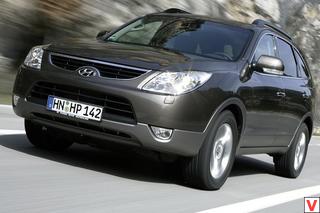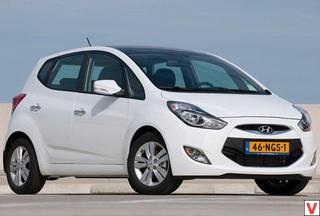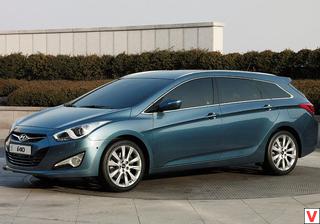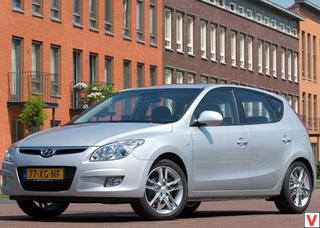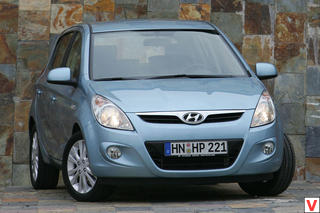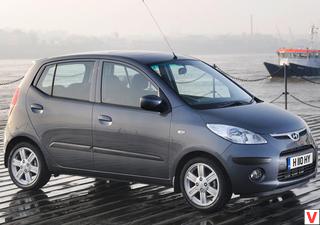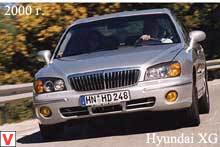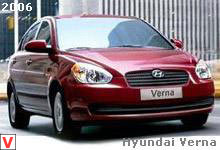
The first generation Elantra (Lantra in some markets) was introduced in the fall of 1990. The model is replaced on the conveyor Hyundai Stellar and was produced exclusively in the sedan. The Korean company designed the car independently, on its own platform, but didn’t produce its engines at that time, so the Mitsubishi licensed engines stood under the hood of the first generation Elantra: 1.5 liter (86 hp); 1.6 liters (113 hp) and 1.8 (124 hp). Gearboxes - five-speed "mechanics" or four-band "automatic".
It is noteworthy that in five years of production, the “first” Elantra underwent three restyling, the most serious of which was carried out in 1993. He touched the shape of the optics, wings, bonnet and partly the interior. The wheelbase of the first generation Hyundai Elantra was 2500 mm, length - 4359 mm (dorestayl) and 4390 mm (Restayl), width - 1673 mm (dorestayl) and 1680 mm (Restayl), height - 1371 mm (dorestayl) and 1320 mm (Restayl ).
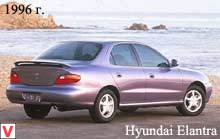
In 1995, customers were offered the second-generation Elantra with sedan and wagon bodies. Version for the Korean market has received a new name Avante. The body got smooth lines and had a rather good resistance to corrosion due to double-sided galvanizing and a steady lacquer coating. By the way, the bumpers on all versions were painted in the body color. A distinctive feature of the design of the second generation was the front part without any false radiator grille. The interior is a continuation of the exterior. Inside, it is also difficult to find at least one acute angle, as in the outline of the body. In general, the salon can be described as spacious and comfortable.
Ergonomics of the driver's seat at a decent level, all controls are at hand. Steering rack type, equipped with power. The dashboard, like the entire cabin, is made in a rounded manner. Also worth noting is the excellent visibility.
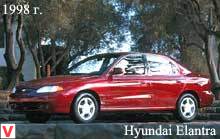
If the sedan provides its owner with a modest luggage compartment of 390 liters, the station wagon has a usable volume of 360/1260 liters. The range of engines has several options for petrol, 4-cylinder engines of 1.5 liters, 1.6 liters, 1.8 liters and 2.0 liters. Transmission: five-speed manual or four-stage "automatic". Suspension - independent front and rear, with anti-roll bars.
Front brakes - disc, ventilated; rear - drum or disc. Passive safety doors and two airbags are responsible for passive safety. For export Lantra came in two trim levels GL and GLS. The differences between them are not only in the colors and materials of interior trim.
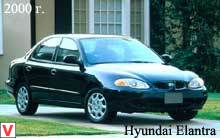
For example, the GLS was equipped with full power, a variety of adjustments to the driver's seat, adjustable steering angle plus ABS. Also on the GLS version sedans, the back seat folds down, while on the GL it is fixed “tightly”. In 1998, the model was restyled, as a result of which the design of the optics, hood and bumpers was changed. A chrome-plated molding passed along the side, a small spoiler appeared on the trunk lid, and the mirror housings became more streamlined. As a result of the measures taken, the drag coefficient of the car dropped to a value of 0.32. Bumpers are made of high-strength TPO plastic.
In the fall of 2000, the release of the Hyundai Elantra II was stopped. Third-generation cars (codenamed XD) began to be produced in 2000. The name Lantra is a thing of the past, and in all markets except the Korean (the Avante name was saved there) the car was known as the Elantra.
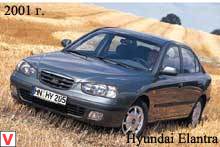
Instead, the wagon in the model range appeared five-door hatchback. The Elantra of this model year has a very aggressive appearance, which is largely formed due to the distinctive design of the headlights, the characteristic Korean grille and the distinctive lines of the front end. Massive bumper painted in body color.
In the lower part of the front bumper are quite large fog lamps and air intakes grille. The rear part of the Hyundai Elantra looks quite massive, due to the fact that the trunk line is slightly sloping down, and the block of rear brake lights and turn signals is too big for this body. The original version of the exterior has been criticized for the awkward design of the grille. This caused a facelift in 2004 (Elantra XD2), which mainly affected the front part of the car, which, due to the introduction of two stiffeners on the sides of the grille, became more aggressive and expressive.
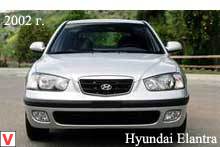
The large air intake in the front bumper is now divided by a horizontal stripe, at the edges of which small round “foglights” are successfully located. In addition, other design elements of the car were affected, such as taillights and dashboard. In the interior there is plastic, familiar to such a class of cars, combined fabric inserts on the seats and on the doors.
Adjustment of the driver's seat are quite diverse, and the driver of any configuration can choose a comfortable position. On the instrument panel are located the engine temperature gauge, tachometer, speedometer and fuel gauge. Inside the speedometer is a liquid crystal odometer. Instrument lighting is made in blue tones. The main equipment for the third-generation Elantra was called the GLS, but there was also a top model called the GT, which differs from the GLS in more rigid chassis settings, leather seats, fog lamps, alloy wheels and a spoiler. Also on this complete set optionally could establish the hatch with the electric drive and anti-skid system.
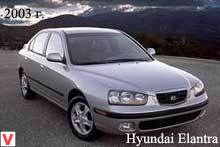
Installed on the car gasoline engines of 1.6 l / 107 hp, 1.8 l / 132 hp and 2.0 l / 141 hp, as well as a 2-liter diesel with a capacity of 112 hp. Since 2004, the two-liter gasoline engine received variable valve timing and its power increased to 143 hp. In 2006, the car gave way to a fourth-generation model on the assembly line, and soon the production of the “third” Elantra was resumed at TagAZ, where the car, called the Hyundai Elantra XD, was made until 2010. The fourth-generation Hyundai Elantra made its debut in 2006 at the International Auto Show in New York. But Elantra XD continued to be produced at the TagAZ plant until 2010.
Therefore, in Russia, the fourth generation is often referred to as the Hyundai Elantra New, the Elantra 2007, or simply the New Elantra. The only option was the body sedan. The fourth generation Elantra combines modern sporty style, comfort and reliability. The appearance of the Elantra IV has become more refined. Smooth lines and newfangled headlight units look attractive especially against the background of the previous generation. The model has changed not only the form, but also the content.

The technical characteristics of the model is an indicator of the high professionalism of Hyundai engineers. The engines with which the Elantra IV is equipped are an example of Hyundai Motor Co. engineering expertise. and represent the best option combination of efficiency and power.
Each of them complies with international standards for the content of harmful substances in exhaust gases and has such qualities as reliability, long service life, as well as improved performance characteristics. The engine line has been completely refreshed: the old units were replaced with modern 1.6 l / 122 hp petrol engines, 2.0 l / 143 hp, as well as a modern 1.6-liter diesel engine (not supplied to the Russian market). A choice of two gearboxes: 4-speed automatic and 5-speed manual. The manual gearbox has new high-performance design features that reduce noise and increase service life.
The comfort of the drive in the Elantra IV and its excellent handling are provided by MacPherson type front suspension with coil springs and gas shock absorbers, as well as a multi-link rear suspension with twin-tube gas shock absorbers. The Elantra is equipped with anti-roll bars to reduce body roll when turning, thereby ensuring the vehicle’s quick response to control commands and maximum predictability of its behavior. In early May 2010, the fifth generation Hyundai Elantra was introduced at the Busan International Auto Show. In the Russian market, the car is sold since September 2011. The design of the model meets the modern concept of the company “flowing lines”.
It differs expressive rounded aerodynamic forms. By increasing the wheelbase, the company's engineers managed to significantly expand the interior of the vehicle, which, one way or another, helps to improve passenger comfort. Elantra V has become longer than its predecessor by as much as 25 mm, as for the width of the body, it has not changed. The interior was subjected to drastic changes, it began to look more luxurious and solid. The Elantra is available in four trim levels with 6-speed automatic or manual transmissions: Base, Optima, Comfort with a 1.6-liter engine producing 132 hp.
and Sport with a 1.8-liter engine 150 hp All models are equipped with a CD / MP3 radio with AUX and USB, as well as the ability to connect an iPod, six speakers, a radio control unit on the steering wheel and an active antenna on the rear window. The manufacturer provides a number of additional options depending on the configuration. Base includes ABS, two frontal airbags, brake force distribution (EBD), immobilizer, ISOFIX child seat fastener lock, air conditioning, on-board computer, 15-inch steel wheels (195/65 R15 tires), central armrest, heated front seats, security alarm with remote control, full-size spare tire and trunk net for latching cargo.
In the configuration Optima leather trim steering wheel and gearbox, alloy 16-inch wheels, side airbags of the first row of seats and curtain airbags for the first and second rows of seats, rear electric windows, automatic mode of raising / lowering the driver's glass, front fog lights, full-size alloy spare wheel and adjustable center armrest on the flight. The Comfort package includes a rain sensor, a 2-zone climate control, an antifogging system for windows with an air ionizer, an electronic stability control (ESP) and aluminum pedal plates. Cars with automatic transmissions are equipped with an Optitron dashboard Supervision.
The 2014 Hyundai Elantra premiered at the Frankfurt Motor Show in September 2013. First, the novelty has become more, having increased in length by 20 mm - up to 4550 mm. By increasing the size of the front and rear bumpers by 5 and 15 mm, respectively.
At the same time, the wheelbase remained unchanged. The 2014 model year Hyundai Elantra has updated bumpers, a modified grille, headlights with LED inserts and L-shaped fog. Also, the updated model received alloy wheels of new design. You will not call the cardinal external update - easy facelift on your face. The changes affected not only the exterior, but also the interior design. According to the developers' assurances, the 2014 model was created taking into account all the wishes of customers. In particular, there were a lot of complaints about the trim, which in the new version has been greatly improved. The main change in the cabin was the new geometry of the center console.
Controls from the point of view of designers began to be arranged more ergonomically. The location and shape of the air deflectors has changed, the center armrest between the front seats has become taller. In addition, there were nozzles for blowing passengers in the back row.
The instrument panel decorated the 3.5-inch OLED-screen, there was a function of ventilation of the front seats (in the top configuration), a new audio system, automatic parking system (SPAS) and electric power steering, which mode of operation can be changed by pressing one button. Comfort mode is recommended to use when parking a car or for a leisurely ride through the city, Normal - for mixed driving conditions, Sport is designed for driving on highways or winding roads. In sports mode, the help of the amplifier is minimal. Now instead of 4 levels of performance (base, comfort, optima, sport) in the Russian market there are three available - Base, Active and Comfort.
Starter kit Base received a new audio system with a high contrast LSD-display and the ability to play CD / MP3 discs, AM / FM radio and six speakers. The Active package has received a dual-zone climate, rain and light sensors, antifogging system, an air ionizer and 16-inch wheels. The top version of Comfort includes a 4.3-inch screen of the multimedia system, lighting around the surroundings, and a rear view camera. The sedan's powertrain lineup consists of two petrol engines already familiar from the previous version - 1.6 liters (132 hp) and 1.8 liters (150 hp).
The latter is now available only in the maximum configuration Comfort in combination with the only available now automatic transmission. The 1.6-liter engine for Base and Active configurations works in pairs with both the “mechanics” and the “automatic”. The basic version with the 1.6-liter engine and manual transmission accelerates in 10.7 seconds, and the top version with the 1.8-liter engine. and automatic in 10.2 seconds. But it deserves special attention that the line of engines has expanded due to the new 1.6-liter turbocharged diesel unit and 128 horsepower with a maximum torque of 280 Nm.
Fuel consumption of this modification is 5.4 liters with a manual transmission and 6.2 liters with the "automatic". To reduce fuel consumption, the Elantra with an “automatic” is equipped with a “start / stop” system (ISG) of its own design. As for security, here Elantra 2014 claims the highest marks.
